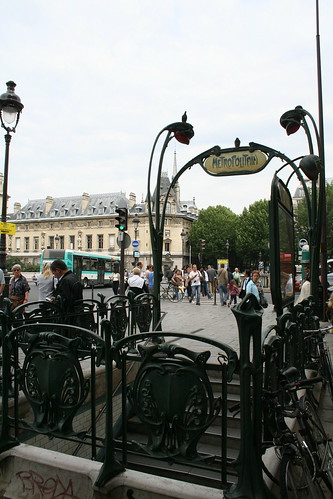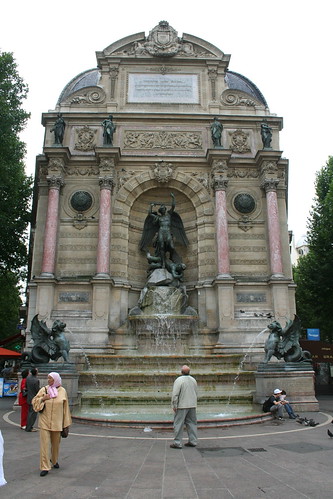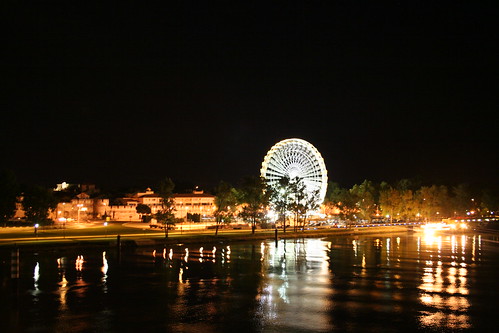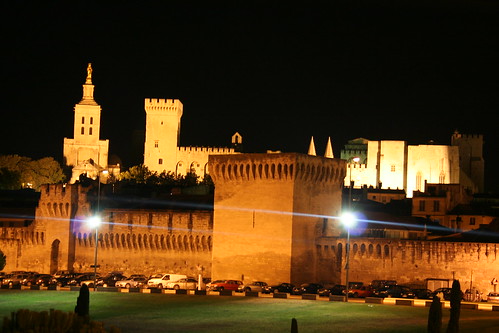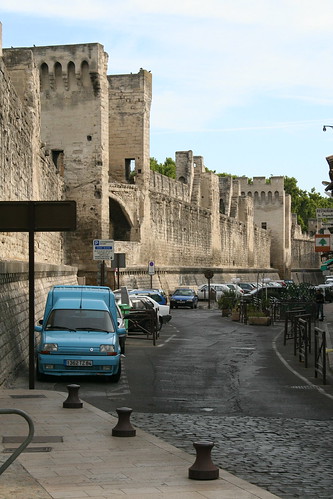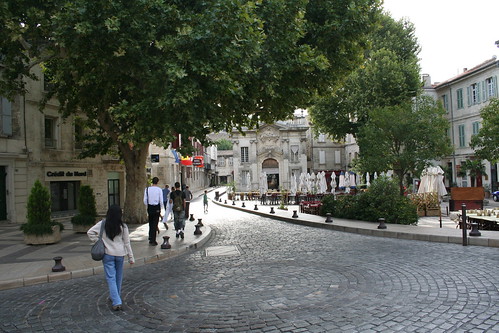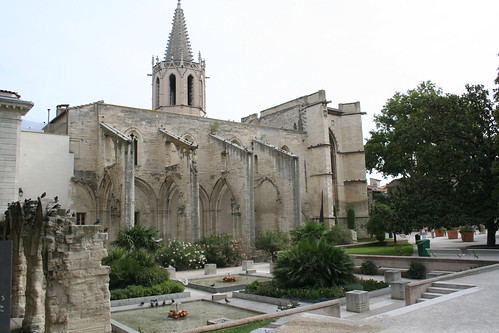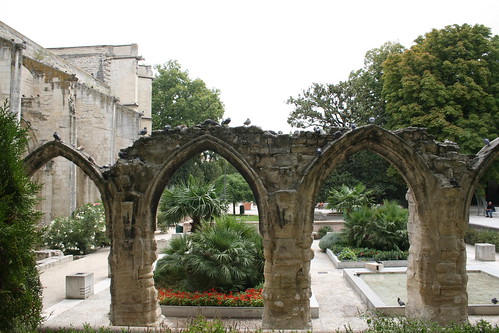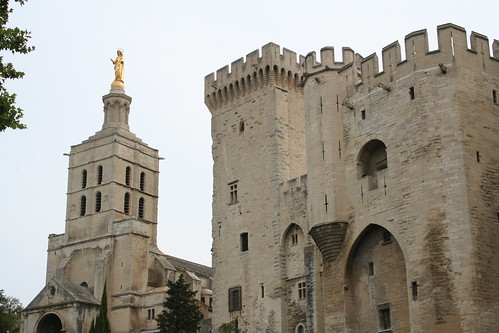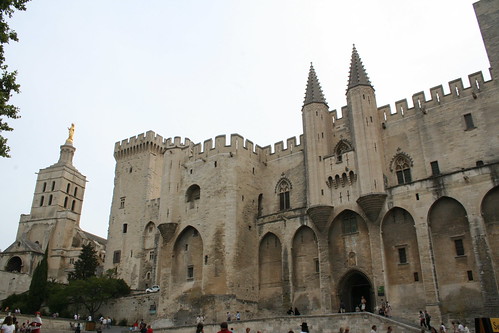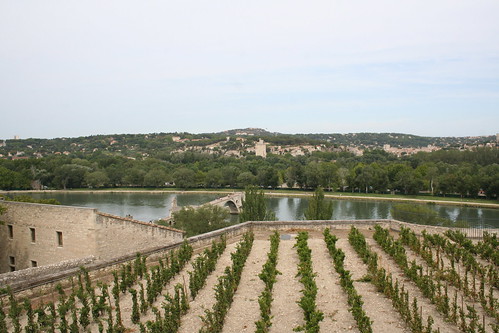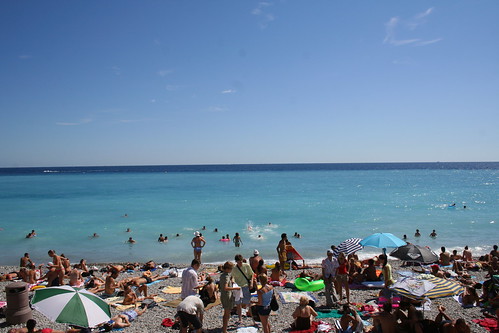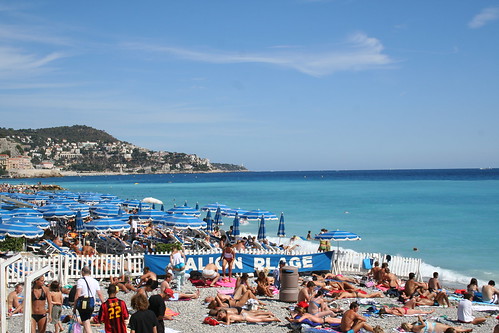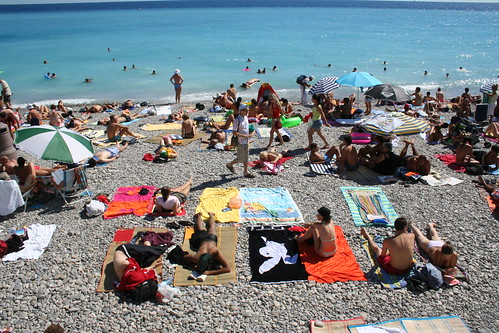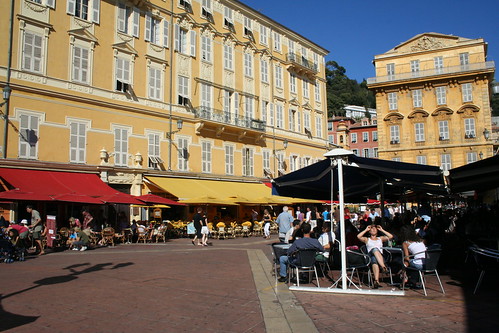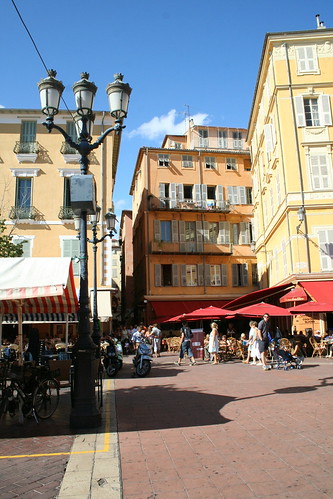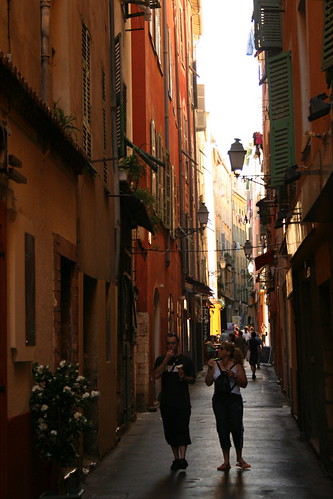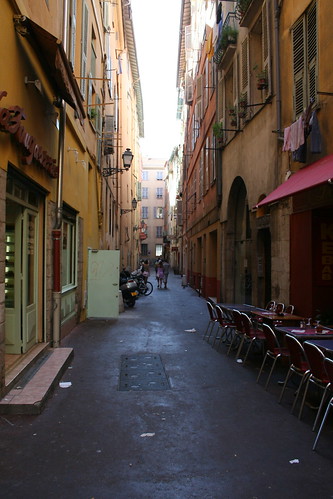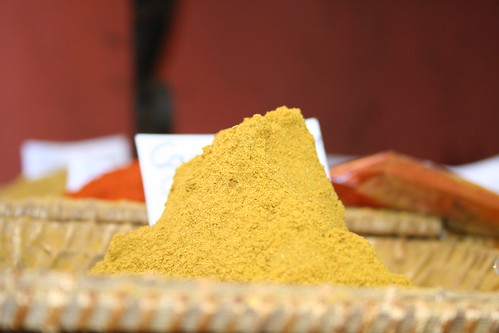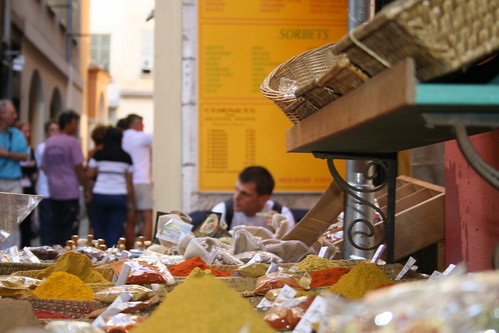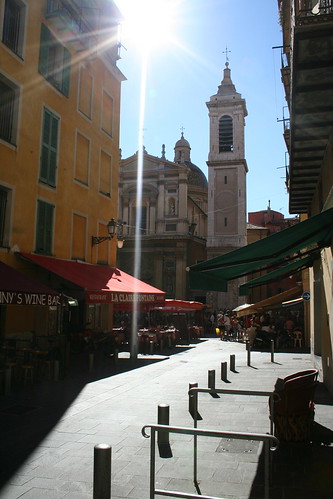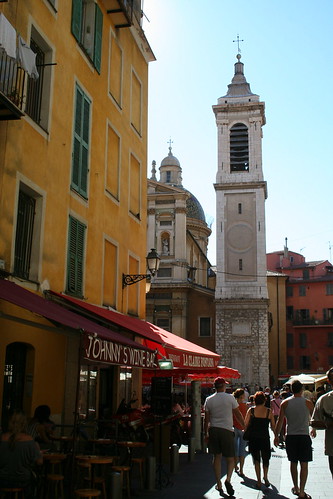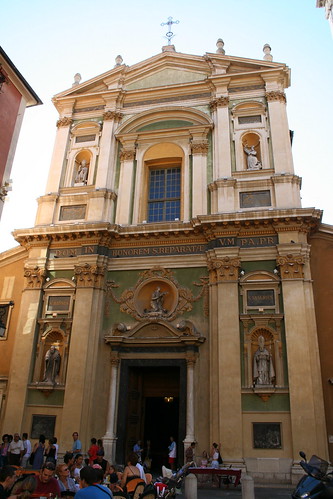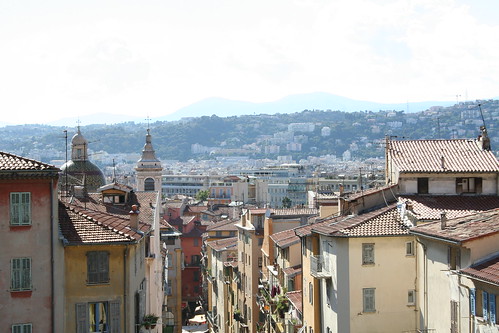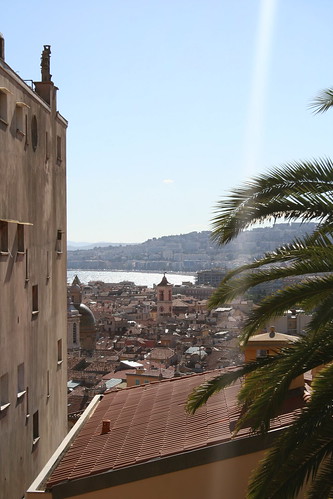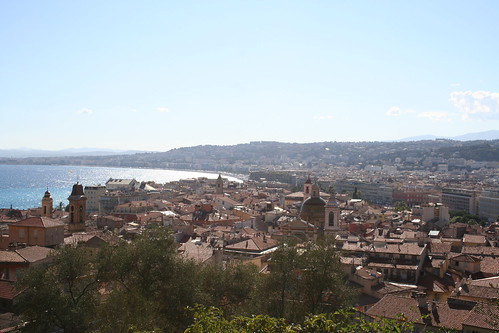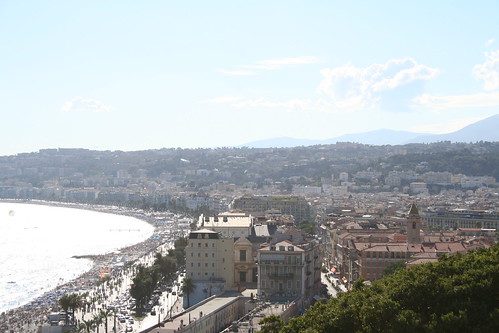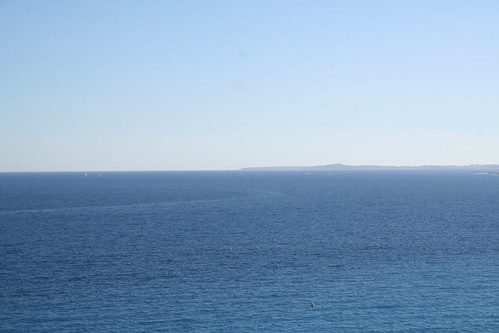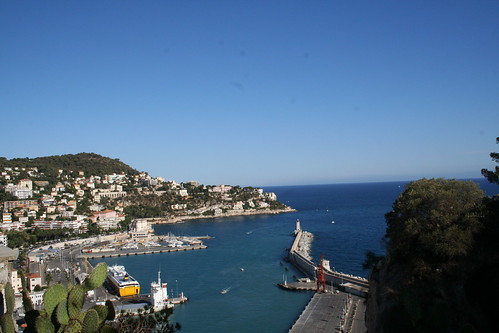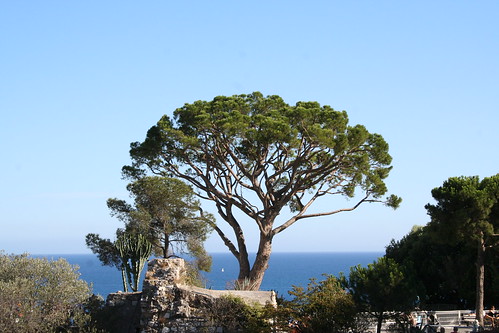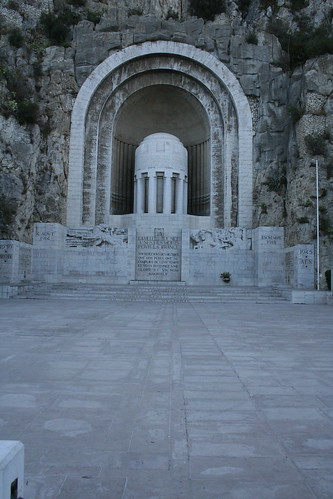I reached Paris after the long train-ride from Nice. Having been unable to contact my hoped-for-host as he had been away during the French holiday, I had to rely upon an email sent to him that I would arrive on the evening of the 15th around midnight at the Lyon Train Terminal. There was a slight panic arriving at the hour to find Vianney, my french friend who I had met a few months before in Vancouver where he had volunteered at Access Justice while taking ESL lessons and living at a local hotel heavily frequented by international students and a crazy-old man that believed he was god - no where to be seen.
Having been completely foiled by the french phone system that seemed to have no instructions in a language other than French, I longed for the simpler days of anglo-crazy Germany or easy-going Italy. Thankfully, an English-speaking traveller waiting for a late or perhaps early morning train was still in the station at that hour and agreed to call Vianney's cell, which I had luckily kept on me.
As it turns out, my friend had received my email and was indeed at the station, but it was so vast in size that he was waiting in a completely different wing of track lines. We soon met up and made our way to the Parisian underground for the long trek back to his apartment in the south-west of the city near the Metro stop: Convention.
Vianney lived in a cramped one-bedroom apartment which luckily had two bathrooms but no living room or other space for me to camp out in. As such, it was the narrow hallway leading from the bedroom and kitchen to the door that became my 'room' for the stay - an accommodation I was more than willing to make given the opportunity of free room-and-board for my stay in one of Europe's most expensive cities. Thus, with a few words of greeting and some catching-up on our activities over the few months since we had seen each other we settled in to sleep: myself in anticipation of my future explorations and Vianney in order to make it to another long day of work at a local law firm.
Paris: Day 1.
Despite my excitement at being in one of the world's most famous cities, I believe I slept in that first morning, enjoying some time and space to myself after having gone from hostel to hostel through most of Europe. Vianney's apartment furnished me the chance of a nice private bath and quiet sleep-in (sans Vianney stepping over me on his way out to work).
However, as soon as I was re-energized I made my way to the Convention stop of the metro and took the train to the heart of Paris, the Ile de la Cite - Island of the City - which hosts ex-royal palaces now government buildings and the history of being the first settlement in the area thousands of years ago. The Ile de la Cite is, literally, an island sitting in the middle of the Seine and beyond what I've already mentioned, it is probably most famous for hosting one of Paris' eldest churches, the Notre Dame Cathedral.
The closest my train-line came to the Ile de la Cite was the St. Michel stop which bordered on the south-side of the Seine and faced the island. This was the entrance to the St. Michel station and the Gothic-looking ironwork was a common indicator of the metro stations throughout Paris (Mexico City borrowed or was given an identical setup for one of their subway stops near El Palacio Bellas Artes to commemorate the opening of the Mexican underground system).
Having been completely foiled by the french phone system that seemed to have no instructions in a language other than French, I longed for the simpler days of anglo-crazy Germany or easy-going Italy. Thankfully, an English-speaking traveller waiting for a late or perhaps early morning train was still in the station at that hour and agreed to call Vianney's cell, which I had luckily kept on me.
As it turns out, my friend had received my email and was indeed at the station, but it was so vast in size that he was waiting in a completely different wing of track lines. We soon met up and made our way to the Parisian underground for the long trek back to his apartment in the south-west of the city near the Metro stop: Convention.
Vianney lived in a cramped one-bedroom apartment which luckily had two bathrooms but no living room or other space for me to camp out in. As such, it was the narrow hallway leading from the bedroom and kitchen to the door that became my 'room' for the stay - an accommodation I was more than willing to make given the opportunity of free room-and-board for my stay in one of Europe's most expensive cities. Thus, with a few words of greeting and some catching-up on our activities over the few months since we had seen each other we settled in to sleep: myself in anticipation of my future explorations and Vianney in order to make it to another long day of work at a local law firm.
Paris: Day 1.
Despite my excitement at being in one of the world's most famous cities, I believe I slept in that first morning, enjoying some time and space to myself after having gone from hostel to hostel through most of Europe. Vianney's apartment furnished me the chance of a nice private bath and quiet sleep-in (sans Vianney stepping over me on his way out to work).
However, as soon as I was re-energized I made my way to the Convention stop of the metro and took the train to the heart of Paris, the Ile de la Cite - Island of the City - which hosts ex-royal palaces now government buildings and the history of being the first settlement in the area thousands of years ago. The Ile de la Cite is, literally, an island sitting in the middle of the Seine and beyond what I've already mentioned, it is probably most famous for hosting one of Paris' eldest churches, the Notre Dame Cathedral.
The closest my train-line came to the Ile de la Cite was the St. Michel stop which bordered on the south-side of the Seine and faced the island. This was the entrance to the St. Michel station and the Gothic-looking ironwork was a common indicator of the metro stations throughout Paris (Mexico City borrowed or was given an identical setup for one of their subway stops near El Palacio Bellas Artes to commemorate the opening of the Mexican underground system).
One of Paris's many public artwork/landmarks. This fountain marks St. Michel - who or what he did I do not know.
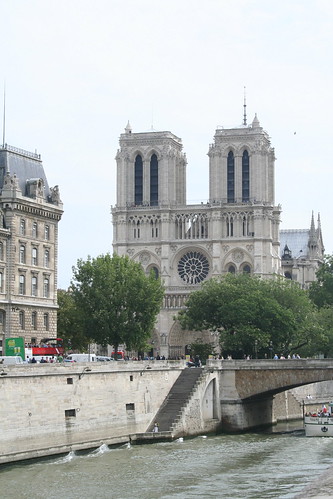
A view from the south-side of the Seine at Paris's first or second most famous landmark, and one of its oldest intact buildings. Supposedly the modernist city planners of the new revolutionary France wanted to destroy the Notre Dame but it was saved by a movement aided by Victor Hugo who's "Hunchback" novel instilled a nostalgia amidst the progressive fervour of the times and stemmed the tide against the Gothic masterpiece.
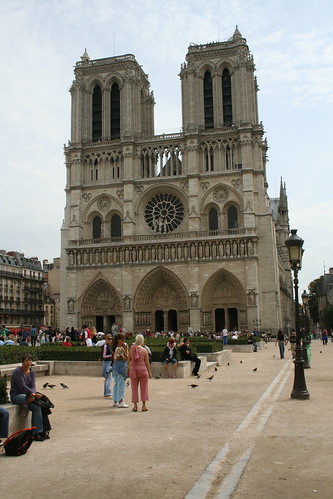
Notre Dame up close.
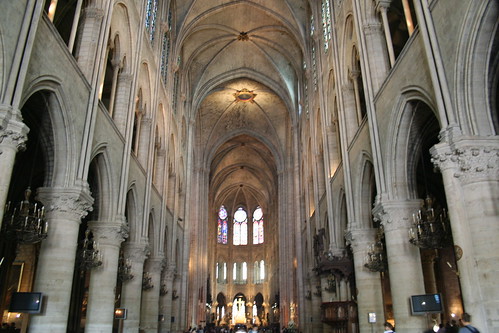
Inside the famous church - clearly the architectural aspiration of expressing height (and hence divinity) can be clearly felt. The famous "flying buttresses" (see below) are the conditions of this heavenly expression.
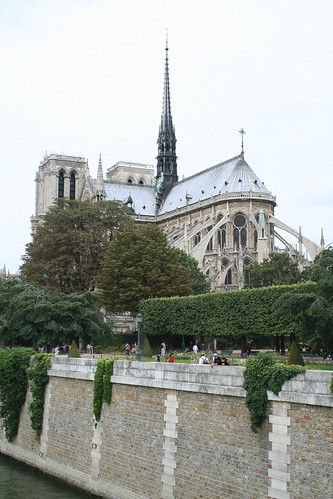
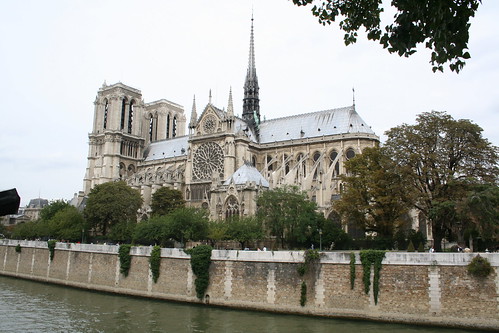
An exterior view of the cathedral from its most photographed position - the south-east. The twin towers, spire and buttress-reinforced nave are the hallmarks of the Notre Dame.
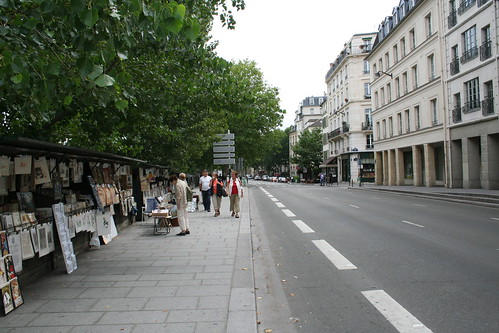
A leisurely stroll alongside the south and north banks of the Seine (off the Ile) will result in passing by numerous street vendors selling all kinds of touristy items. Paintings and lithographs of Parisian life and landmarks are commonly sold.
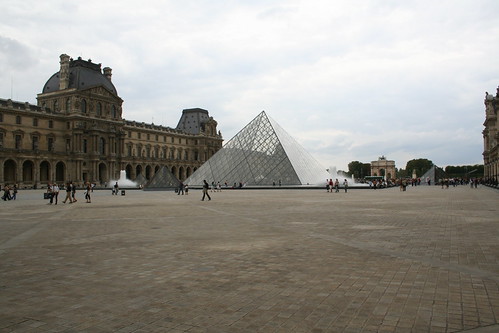
Crossing over to the North or what the Parisians consider the "Right" (as opposed to "Left") Bank saw me quickly run into this famous modern pyramid which I had seen shortly before in Vancouver in Dan Brown's The Da Vinci Code. Despite Parisian's general distaste for the glass pyramids (with supposedly 666 glass panes?!?! - or is that another Dan Brown-esque rumour), I thought the coexistence of the old palatial buildings of the French Kings and the postmodern glass of an even more ancient building - the Egyptian pyramid - was quite wonderful.
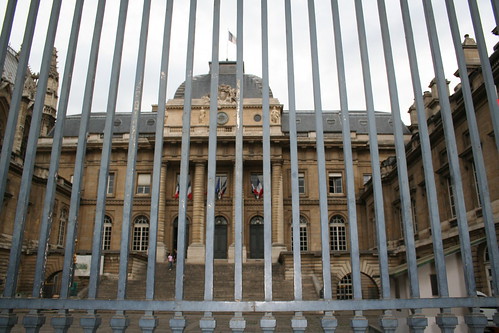
Circling back toward the Ile de la Cite which I had not quite explored before dashing off to find the Louvre on the Right Bank, I came across the Palace of Justice, a building that had previously belonged to the royal family and is now gated and guarded by police.
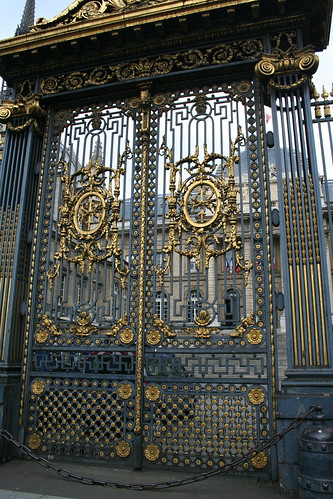
The elaborately decorated gate of the Palace of Justice.
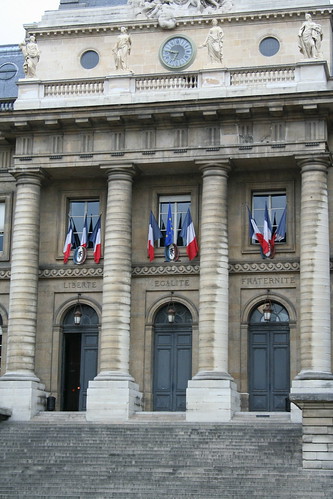
The words "Liberty, Equality, Fraternity" inscribed above the three doors of the Palace mark the revolutionary changes added by the new French government to their newly expropriated aristocratic home.
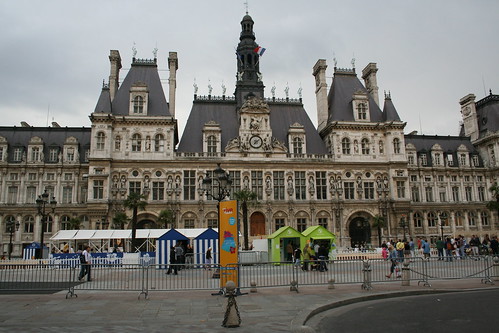
Crossing the Seine again, but this time further east on the North / Right Bank I ran into the "city hall" or "Hotel de Ville". On the same site as the original 14th century city government, the hotel de ville has been built and rebuilt over the centuries due to wear-and-tear and the occasional disaster such as the Paris fire of 1871.
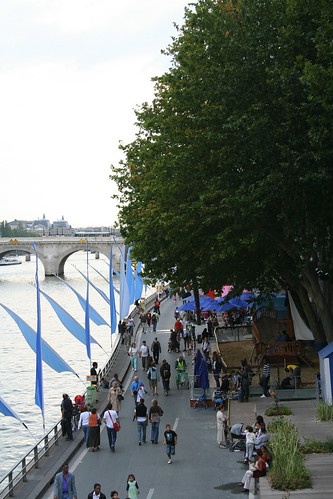
A view of the Right Bank. The roadways were closed for the summer season but are re-opened at other times for vehicular traffic. Running unobstructed alongside the Seine and underneath the bridges, this motorways provide efficient passage through the city.

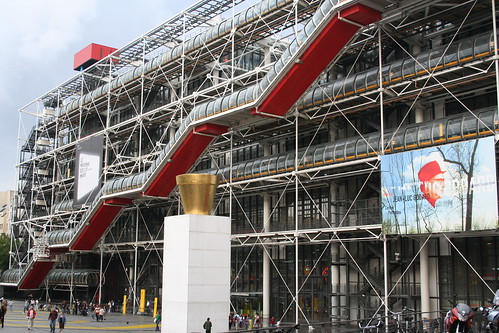
Eyesore or artwork? The Centre George Pompidou is a museum that houses much of Paris' modern art collections - not much of a surprise given the fact that the building itself resembles a piece of modern art. It is, as can be seen, a building turned inside-out with most of the interior piping and skeletal components visible for the eye to see. The diagonal tube visible above consist of a series of escalators leading to the various levels of the museum.
With the day beginning to wane, I started to head back toward St. Michel station to meet Vianney for an evening drink.
With the day beginning to wane, I started to head back toward St. Michel station to meet Vianney for an evening drink.
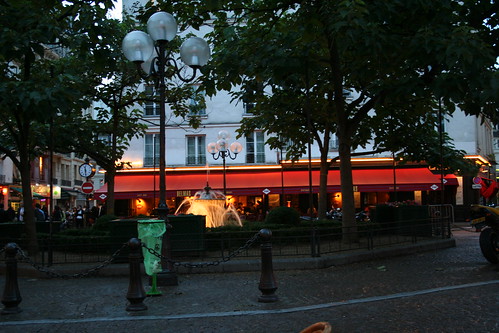
Strolling toward the Latin Quarter in the heart of the Left Bank we enjoyed an expensive cup of coffee and waited for night to fall. The famous french university - the Sorbonne - was nearby.
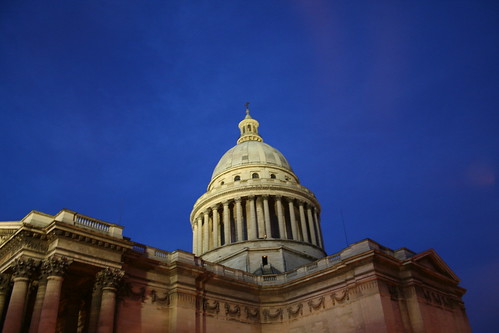
France's own Pantheon, caught as if against a movie editor's blue screen, during the twilight hour. This building is famous for housing the tombs of France's most illustrious including Marie Curie and Victor Hugo.
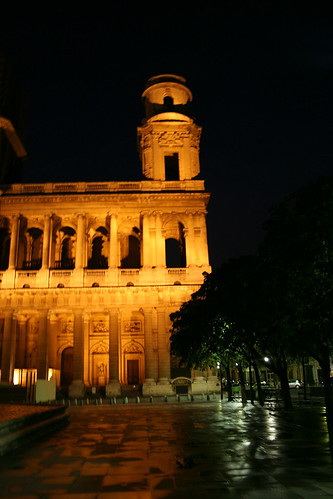
Some of my favourite photos of the trip came from my night shots of Paris. Here is the St. Sulpice church, one of Paris's eldest (alongside the Notre Dame) and which is actually situated on the site of an older Romanesque church built in the 13th century. This church played also played a role in The Da Vinci Code.
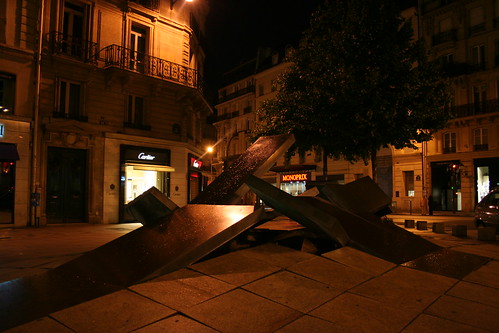
I love the angular lines and the soft glow of the lights in this picture of a public artwork display placed randomly at a street-corner in Paris.

A blurry picture of the Simone de Beauvoir-Jean Paule Sartre Place off the Boulevard Saint-Germain (a major street in Paris). As far as I know, this church is nothing special :)
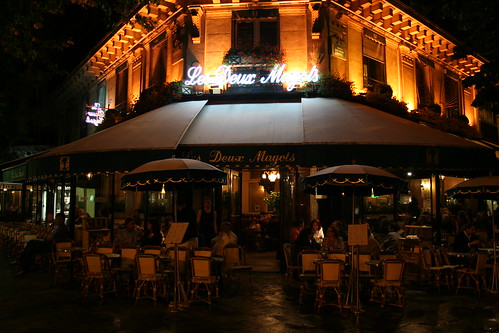
The favourite watering hole of de Beavoir, Sartre and others including Hemingway. The Deux Magots is now frequented by Paris's rich and famous.
Well, that's the end of Day and Night 1 in Paris. Stay tuned for Day 2 to come shortly (I hope)!
Well, that's the end of Day and Night 1 in Paris. Stay tuned for Day 2 to come shortly (I hope)!
